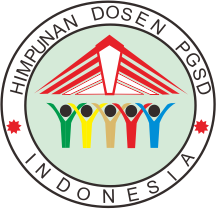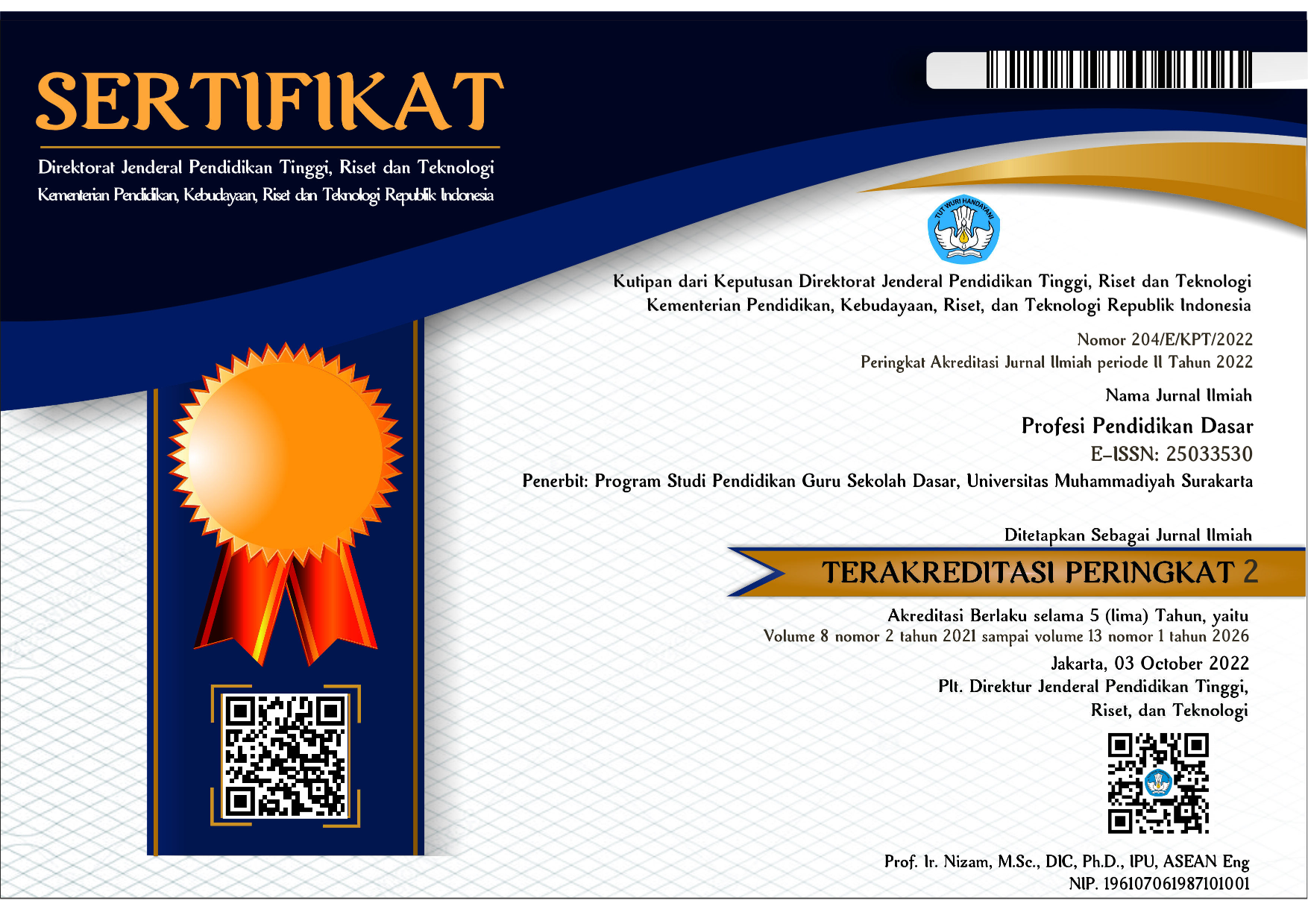KREASI IKLIM SEKOLAH MELALUI GERAKAN SEKOLAH MENYENANGKAN DI SD MUHAMAMMADIYAH MANTARAN
Rr. Khoiry Nuria Widyaningrum(1*), Fitri Nur Mahmudah(2)(1) Manajemen Pendidikan UAD
(2) Manajemen Pendidikan Universitas Ahmad dahlan
(*) Corresponding Author
Abstract
The purpose of this study was to determine the creation of the school climate in Muhammadiyah Elementary School and the role of the Principal in creating this climate. The research method was carried out in a descriptive qualitative manner. Data retrieval is done by observation or observation as well as interviews with students, teachers and parents of students' guardians. The research instrument used in the form of a list of questions and observation sheets. Photo and video documentation is also done as a reinforcement bouquet. The results obtained from this study are the creation of the school climate in Muhammadiyah Elementary School Mantaran colored by the concept of a fun school movement whose main purpose is to instill character and make education more humane humans through program 1) Positive Environment Creation, 2) Character Education, 3) Learning based on project and problem solving, 4) School Conectednes. Based on the results of observations, the level of the type of climate at the Muhammadiyah Elementary School is classified as an open school climate and is a level of conducive climate. The role of the school principal in creating a school climate in Muhammadiyah Elementary School is among others: 1) Changing the teacher's mindset and parents' guardianship towards education that humanizes humans, 2) creating relationships and relationships between people with love and affection, 3) division of delegation of duties , 4) resolving conflicts as soon as possible so as not to disturb the comfort of work, 5) giving motivation (performance rewards, awards, teacher good stars etc.), 6) harmonizing and enriching the work environment and learning by creating positive environments both physical and non-physical, 7) The Cenectedness School program includes GSM networks, Parent Teaching, etc.
Keywords
Full Text:
PDFReferences
Cohen, J., McCabe, L., Michelli, N., & Pickeral, T. (2009). Measuring and improving school climate: A strategy that recognizes, honors and promotes social, emotional and civic learning the foundation for love, work and engaged citizenry. Teachers College Record, 111(1), 180–213.
Gunbayi, I. (2007). School Climate and Teachers ’ Perceptions on Climate Factors : Educational Technology, 6(3), 70–79. Retrieved from https://learn.rochester.edu/bbcswebdav/pid-1849557-dt-content-rid-22303682_1/courses/ED468.2019SUMMER.13203/school climate and teachers perspective.pdf
Mardianto. (2018). Membangun Iklim Sekolah Untuk Mereduksi Perilaku Agresi Siswa: Bullying dan Cyberbullying. (November), 1–14.
Marta, D. E. (2016). Implementasi Pemberian Reward Kepada Siswa SD Muhammadiyah Bantul Kota. Jurnal Pendidikan Guru SEkolah Dasar, Edisi 25.
Pretorius, S., & de Villiers, E. (2009). Educators’ perceptions of school climate and health in selected primary schools. South African Journal of Education, 29(1), 33–52. https://doi.org/10.1590/S0256-01002009000100003
Pujiatin, D. (2014). Strategi Kepala Sekolah Untuk Mengembangkan Iklim Sekolah (Studi Multi Kasus di SMKN 1 Pogalan dan SMK Muhammadiyah 1 Trenggalek ).
Rahmawati, T. (2016). Pembentukan iklim sekolah menuju Learning Community. Http://Staffnew.Uny.Ac.Id/Upload/198111112009121001/Penelitian/Artikel+iklim+sekolah.Pdf, 1–21.
Rapti, D. (2012). School Climate as an Important Component in School Effectiveness. Academicus - International Scientific Journal, (69), 110–125. https://doi.org/doi/10.7910/DVN/EUGU2U
Wahyuningrum, M. M. (2008). Iklim Sekolah Di Era Otonomi Sekolah ( Suatu Kajian Manajerial ). Journal Manajemen Pendidikan, 02/Th IV/O(02), 62–78.
Wiyani, N. A. (2013). Manajemen Kelas: Teori dan Aplikasi untuk menciptakan kelas yang kondusif. Jogjakarta: Ar-Ruzz Media.
Article Metrics
Abstract view(s): 2006 time(s)PDF: 1752 time(s)
Refbacks
- There are currently no refbacks.


















